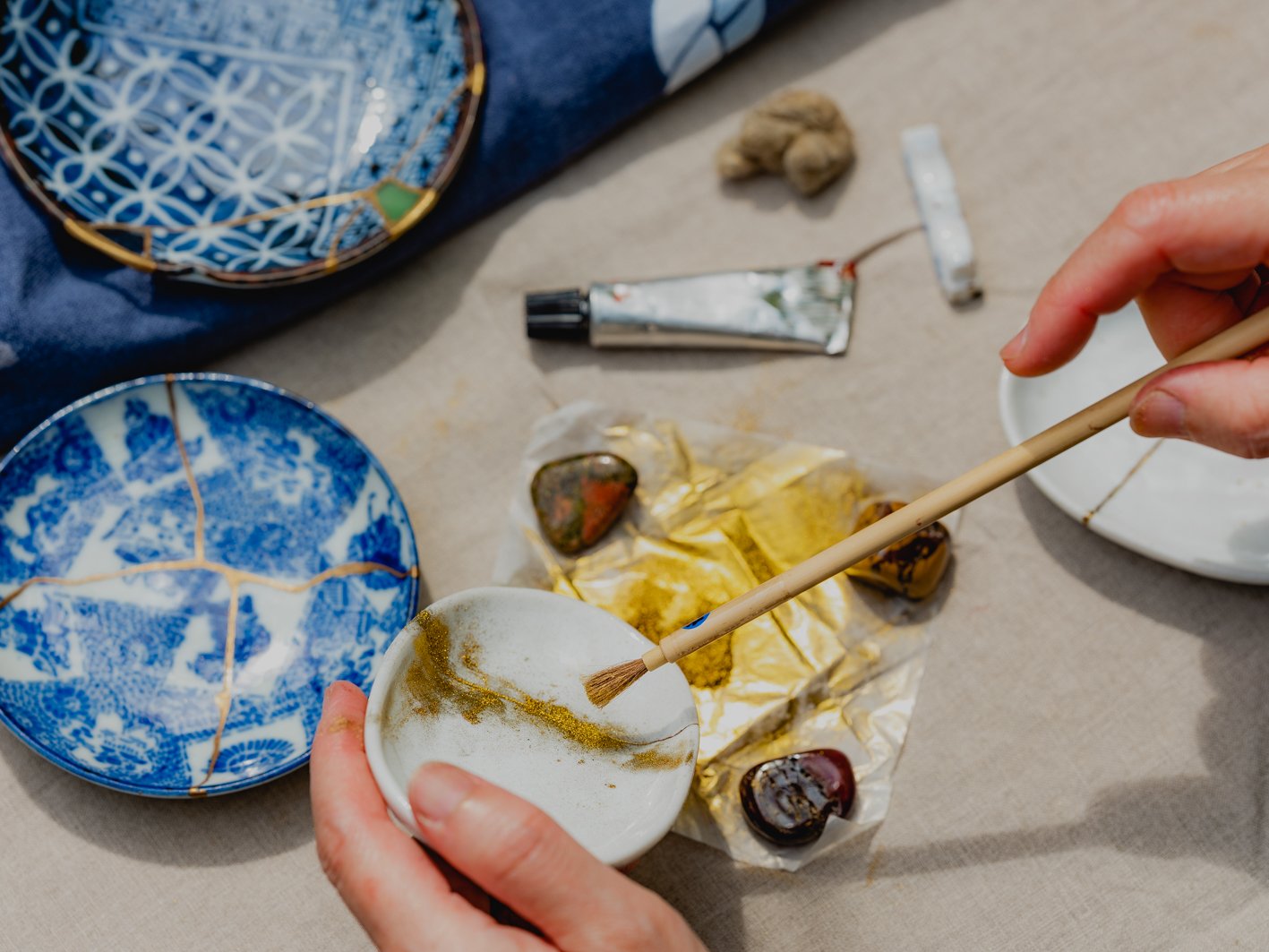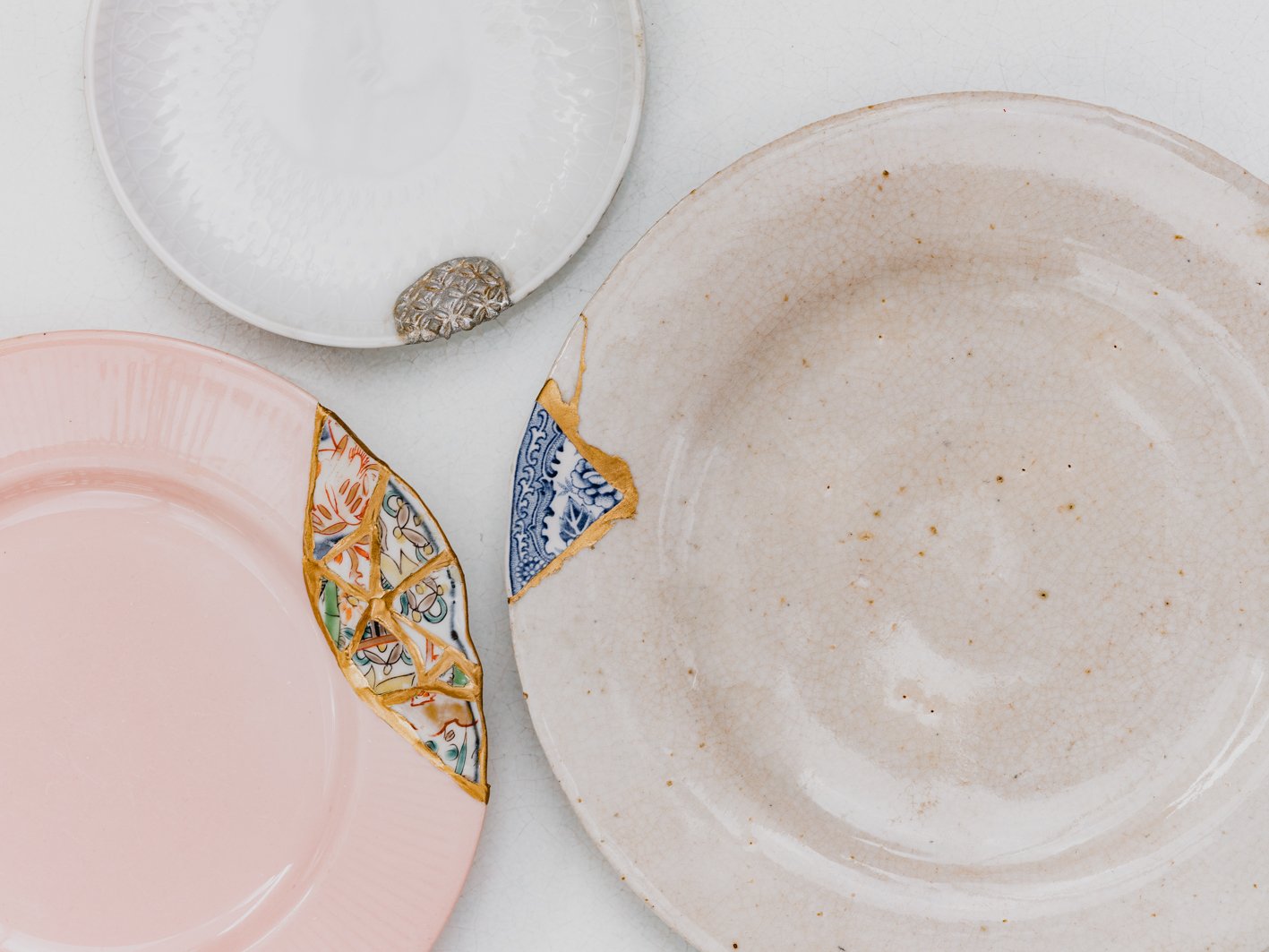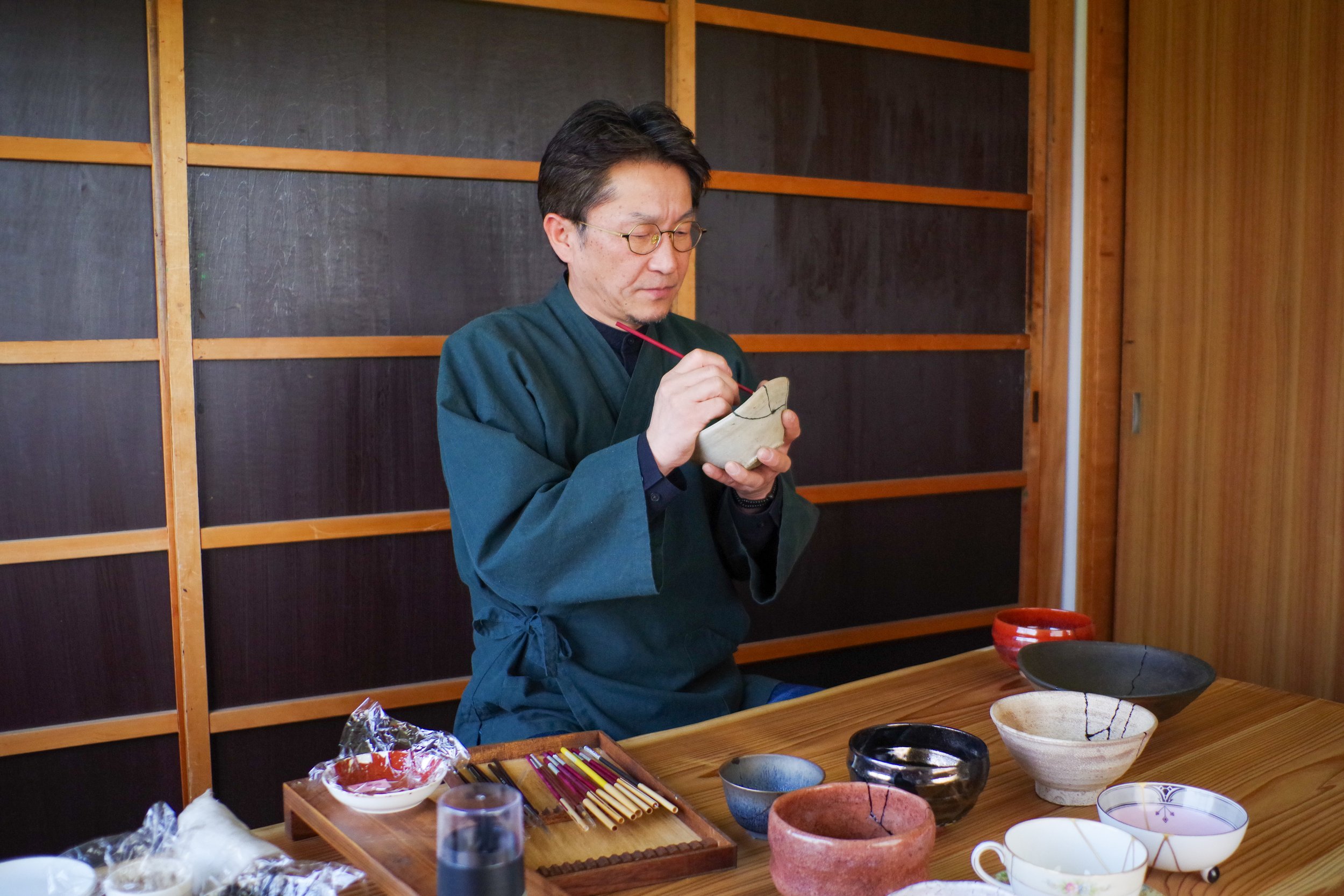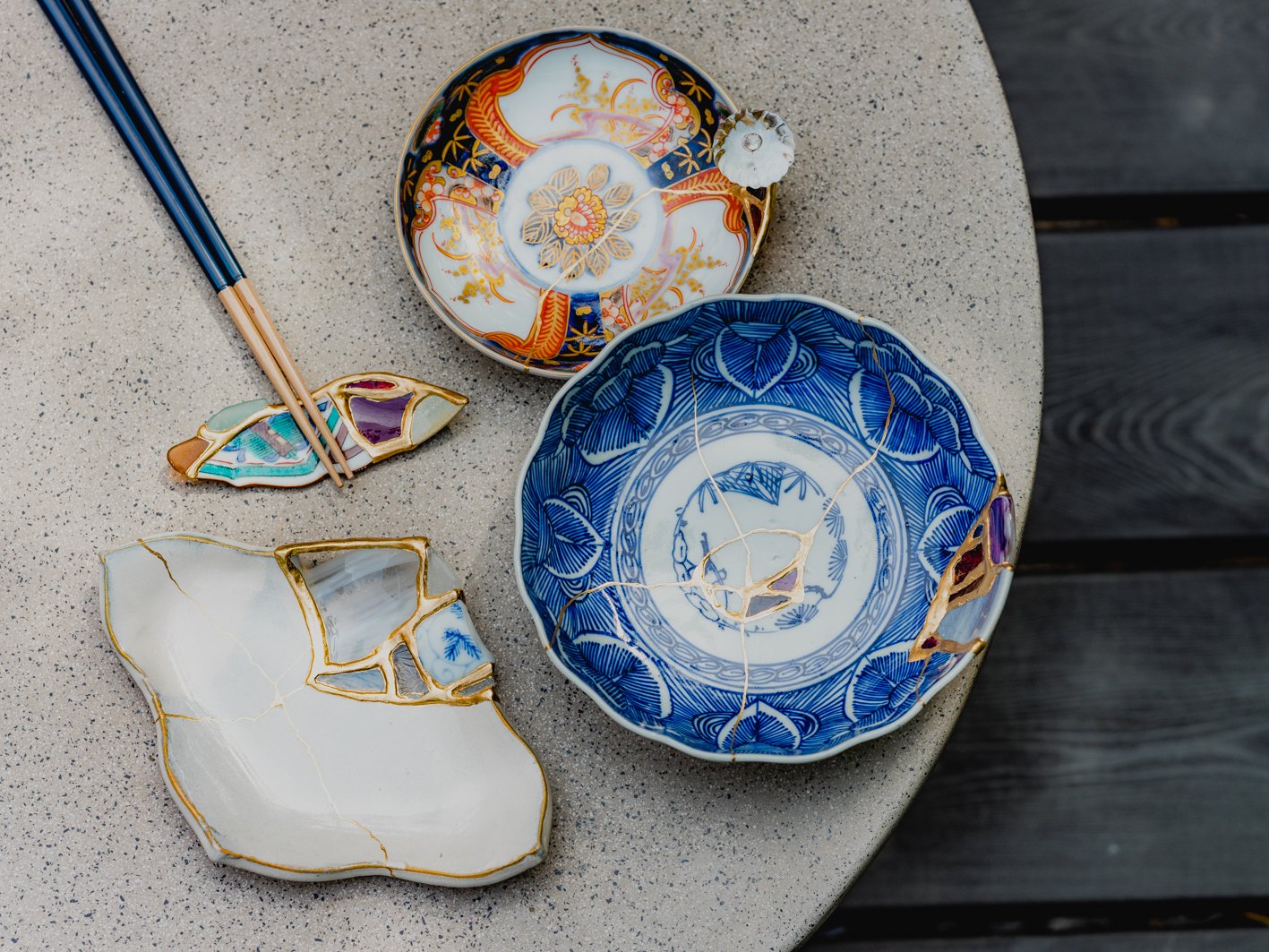BEAUTIFULLY BROKEN: THE JAPANESE ART OF KINTSUGI REPAIR
Pantechnicon is shining a spotlight on the art of kintsugi throughout October, a technique and philosophy that has been present in Japanese culture for over 400 years.
Kintsugi uses resin and powdered precious metals to fix, renew and create ceramics. Its origins lie in the repair of damaged tea ceremony items like tea bowls and other sentimental ceramics, and in recent decades has adopted by contemporary artists. It is said that when an object is repaired with kintsugi, the piece becomes more beautiful for the damage it experienced – after all, the kintsugi technique proudly shows the journey an object has been through.
Astrid Vanhuyse & Kenta Akasaki, Akasaki Vanhuyse
AKASAKI VANHUYSE is a London-based architecture and design studio established in 2022 by Japanese architect Kenta Akasaki and French designer Astrid Vanhuyse. New from the studio are their soudure metal trays, which are made from scraps of steel sheets produced by the furniture industry. The offcuts are selected and welded together – soudure means ‘weld’ in French – to form the trays. Being handmade, each pattern has a unique character. During the manufacturing process, weld patterns are usually polished away. But here, they are celebrated and become ornamental and functional. The weld pattern remains visible to highlight the manufacturing process of recycling metal scrap.
George Inaki Root, Milamore
Founder and creative director of Milamore jewellery, George Inaki Root believes kintsugi is a metaphor we can apply to ourselves. We can mend and transform what has broken us, and we can find beauty in the flaws. It’s a part of human nature to experience hardship, but when we embrace the teachings, we can grow and become stronger. See the beautiful collection of Milamore jewellery available at Pantechnicon here and find out about the yobitsugi workshop with George and Iku here.
Iku Nishikawa, Kintsugi Oxford
Trained in kintsugi repair by artisans in Kyoto, Iku regularly hosts classes from her studio in Oxford, and also carries out kintsugi repairs for private clients. Iku joins us at Pantechnicon in October for a series of workshops where you can make and can create and take home your own kintsugi ceramics. She has also created three original yobitsugi plates, combining ceramics and stained glass for the display in Studio.
Kunio Nakamura, Kintsugi Pieces in Harmony
Nakamura has been researching kintsugi for over 20 year and has authored a number of books on the subject. He runs 6th Dimension Café in Tokyo, where he regularly hosts kintsugi workshops. Nakamura’s signature body of work is ‘Kintsugi Pieces in Harmony’ for which he units plates from different countries, with the joins signifying country borders. Originally focusing on countries with turbulent border histories, such as North and South Korea, Pakistan and India, and Turkey and Armenia, for the display at Pantechnicon he has specially created works combing vintage Japanese ceramics with plates by Nordic and British makers, including Burleigh, Wedgewood, Royal Copenhagen and Arabia.
Nobuyasu Suginaka, Kintsugi Labo
Launched in 2020 with the aim of creating sustainable art, Kintsugi Labo collect broken ceramics from kilns across Japan that would otherwise be discarded. Showing their work in the UK for the first time, on display at Pantechnicon are bowls, teacups, sake cups, and a tea pot using kintsugi (gold) and gintsugi (silver) repair. Master lacquer craftsman and kintsugi artist Nobuyasu Suginaka will be specially visiting from Japan to host workshops at Pantechnicon on 1 and 2 October. Join them to create a maki-e coaster set or a trinket tray.
Tomomi Kamoshita, ceramist & kintsugi artist
Kamoshita uses a technique called yobitsugi (meaning ‘calling together’) to renew damaged ceramics by introducing objects foreign to the original piece, resulting in a patchwork-like finish. Using old pieces of her own pottery and combing them with fragments of broken ceramics and sea glass washed up on the beach, she has created chopstick and cutlery rests, and plates for the display at Pantechnicon. Tomomi is also joining us for a set of sold-out workshops in October.
Kumamoto Utsuwa Reborn Project
April 2016 saw a series of devastating earthquakes strike Kumamoto, on Japan’s southern island of Kyushu. The Kumamoto Utsuwa Reborn Project has created kintsugi ceramics using shards of peices made by five potters that were broken in the earthquake. On display at Pantechnicon is ‘YOSHIZAKURA’, a matcha green tea bowl created in the yobitsugi style, as well as a series of coffee cups created with Yohei Kubota, 2017 winner of the Japan Barista Championship’s drip division. Drop us an email if you’d like to meet Akira Otaguro, a representative of the project.







